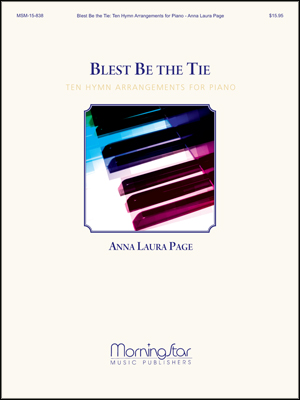- |
User Links
Canto de esperanza/Song of Hope
Hymn Information
- First Line
- ¡Dios de la esperanza, danos gozo y paz! (May the God of hope go with us every day)
- Translator (English st. 1)
- Alvin Schutmaat, 1921-1988
- Author (English st. 2)
- Tom Mitchell, b. 1947
- Translator (Spanish st. 2)
- Frank W. Roman, b. 20th c.
- Text Source
- St. 1 Spanish traditional
- Tune Name
- ARGENTINA
- Arranger
- Tom Mitchell, b. 1947
- Tune Source
- Argentine folk melody
- Topic
- Justice · Obedience to God's Will · Responses: To Benediction · Elements of Worship: Charge and Blessing
Copyright Information
- Text Copyright
- English St. 2 © 1993 Choristers Guild
- Tune Copyright
- Arr. © 1993 Choristers Guild
- Reprint/Projection Information
- Words and Music: Permitted with a license from CCLI.com or from OneLicense.net. If you do not own one of these licenses, please contact the copyright holder for permission.
Scripture References
Confessions and Statements of Faith References
Further Reflections on Confessions and Statements of Faith References
To leave the security of worship and enter the world for service requires firm confidence in the faithful promises of God to be with us, to care for us and bless us. Our deepest assurance comes from the comfort we have that “I am not my own, but belong—body and soul, in life and in death—to my faithful Savior Jesus Christ” (Heidelberg Catechism, Lord’s Day 1, Question and Answer 1). Because I belong to him, “he will provide whatever I need for body and soul, and will turn to my good whatever adversity he sends upon me in this sad world. God is able to do this because he is almighty God and desires to do this because he is a faithful Father” (Heidelberg Catechism, Lord’s Day 9, Question and Answer 26). We have the assurance that “our Lord speaks to us now through the inspired Scriptures. Christ is with us day by day” (Our Song of Hope, Stanza 1). How rich it is to carry such assurance of his blessing with us as we leave the service of worship!
Canto de esperanza/Song of Hope
Introductory/Framing Text
Additional Prayers
Praying, let us work for peace.
Singing, let us share our joy.
Working, let us refurbish the world.
Till the angels sing and the last trumpet sounds. Amen.
Canto de esperanza/Song of Hope
Tune Information
- Name
- ARGENTINA
- Key
- G Major
- Meter
- 11.11.11.11 refrain 7.7.7.7
Recordings
Musical Suggestion
- This repetitive harmony presents a perfect opportunity to process with handbells, handchimes, and/or Orff instruments. Mark all G, B, and D instruments with quarter-inch round red labels; all A, C, E with blue; and all D, F-sharp, A, C with yellow. Playing a red, red, blue, blue, yellow, yellow, red, red sequence in half-note rhythm produces the harmonic foundation. The children, youth, or adults can learn the sequence in about ten minutes. Volunteers can play and process on an extended introduction and can also accompany the singing.


 My Starred Hymns
My Starred Hymns




